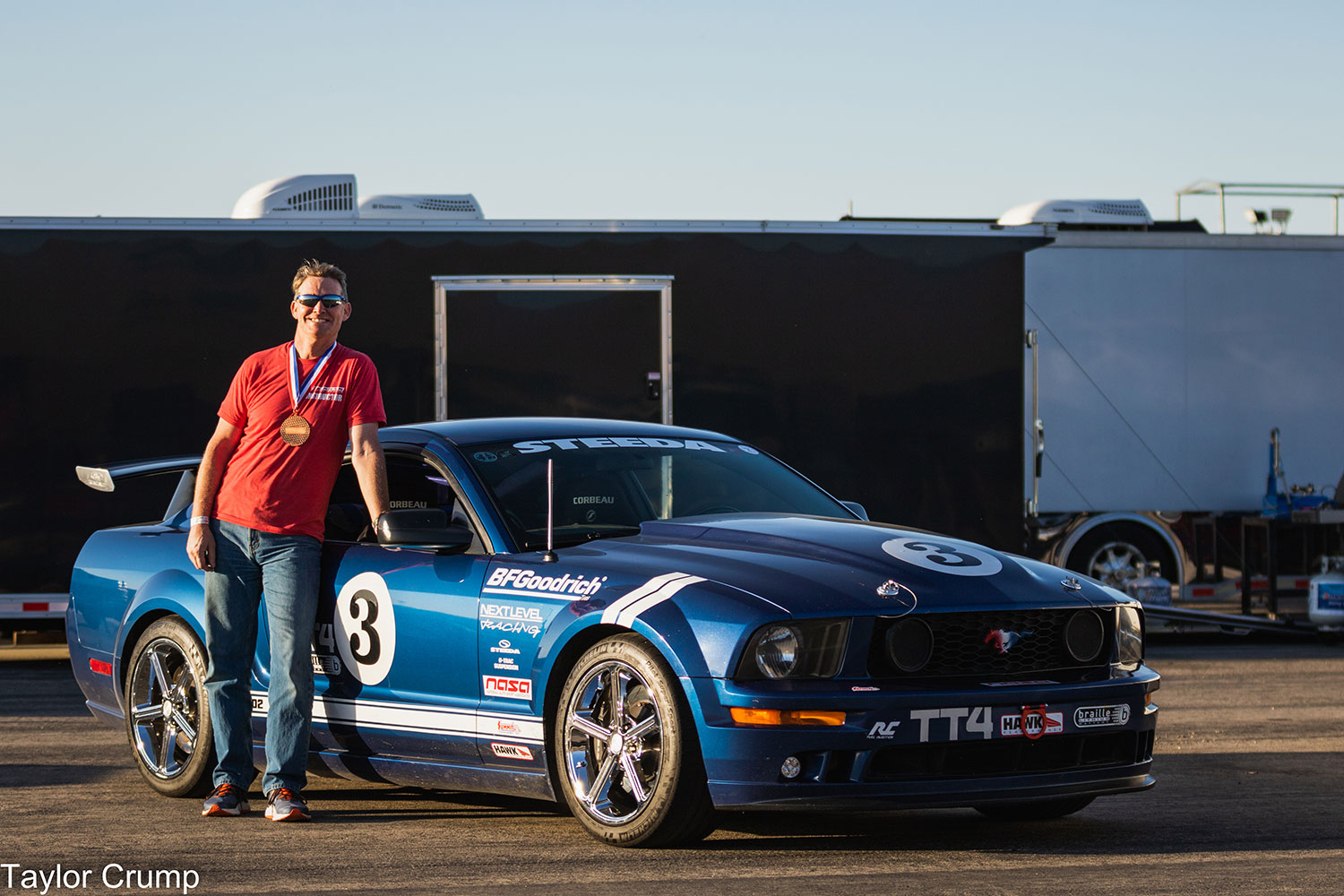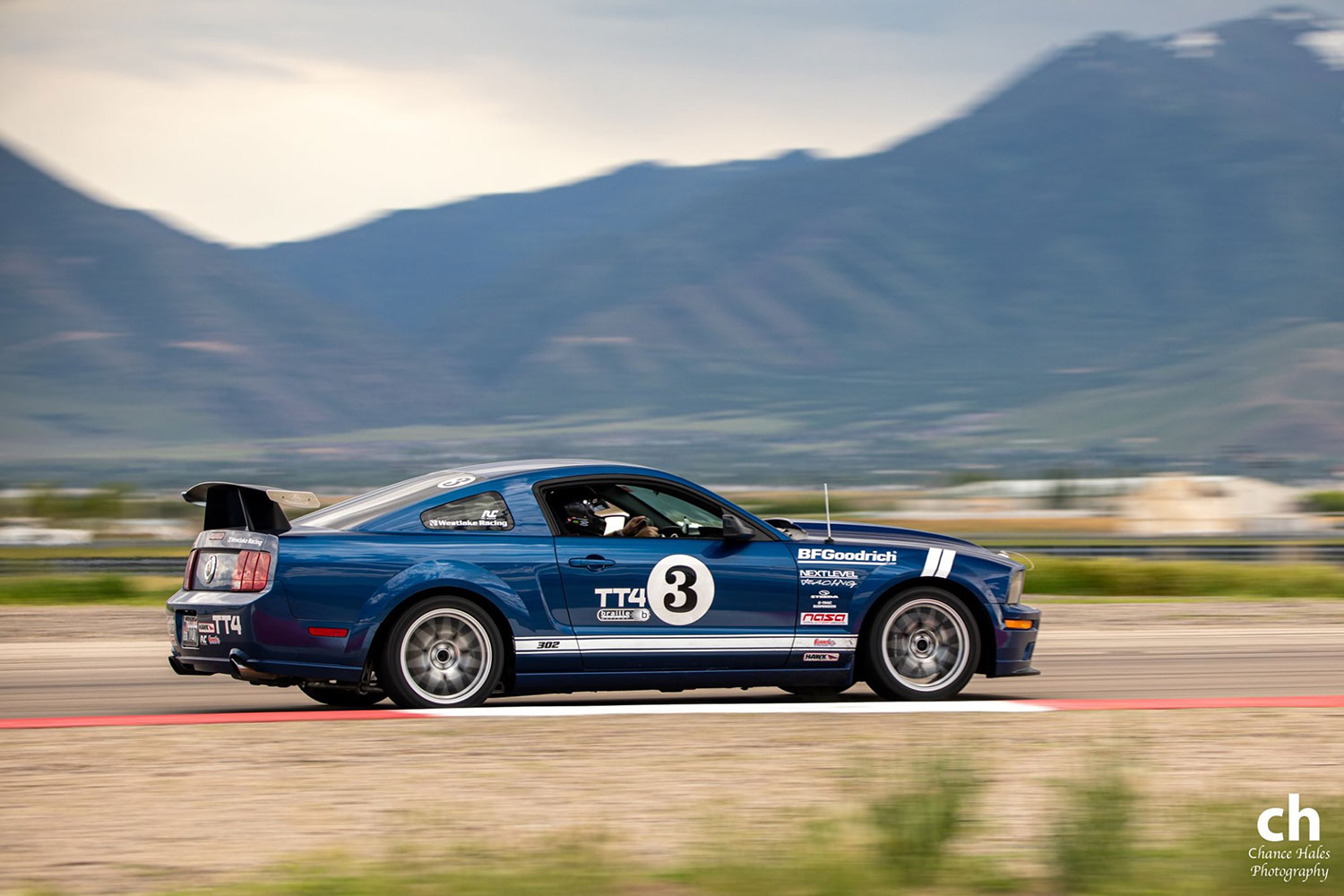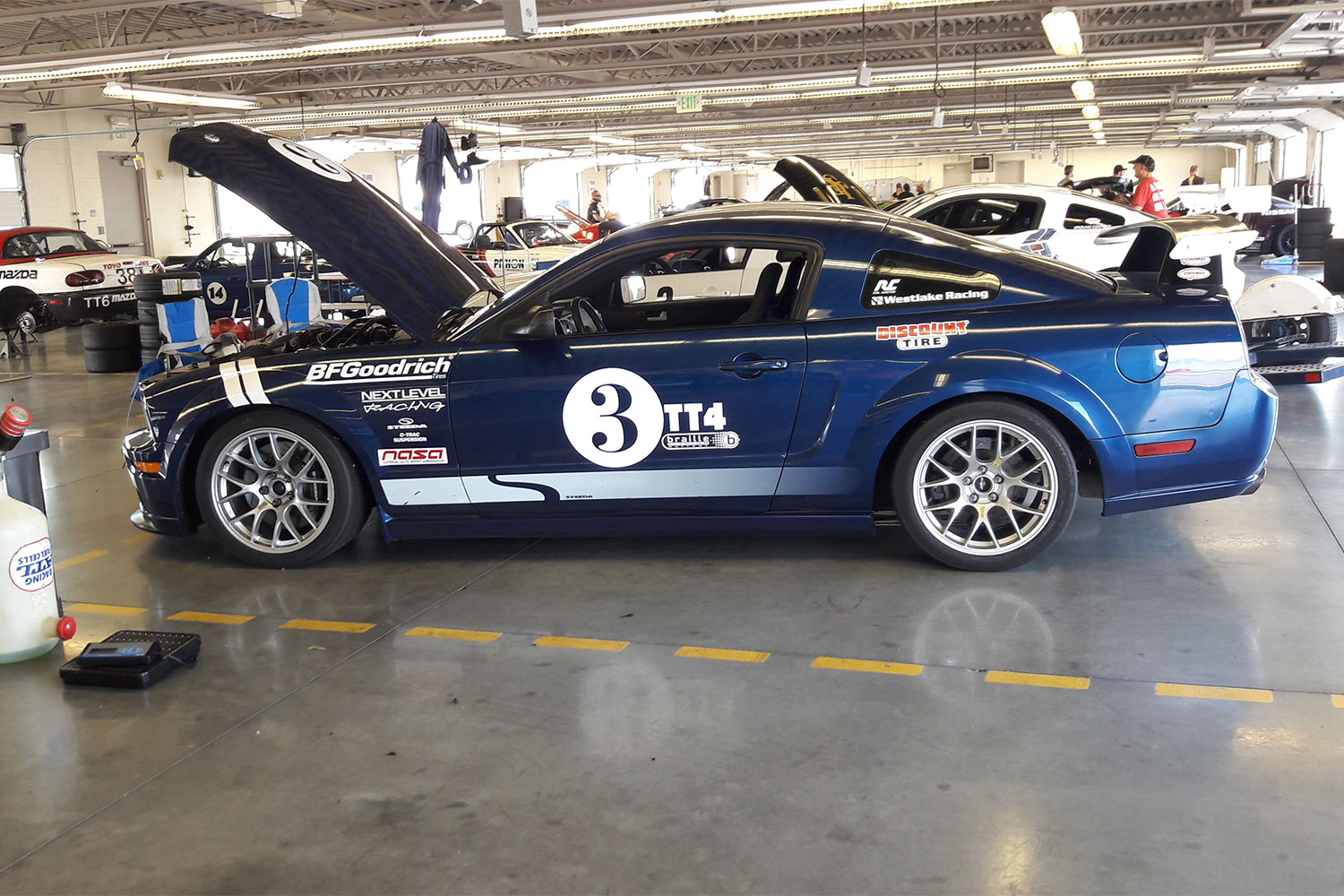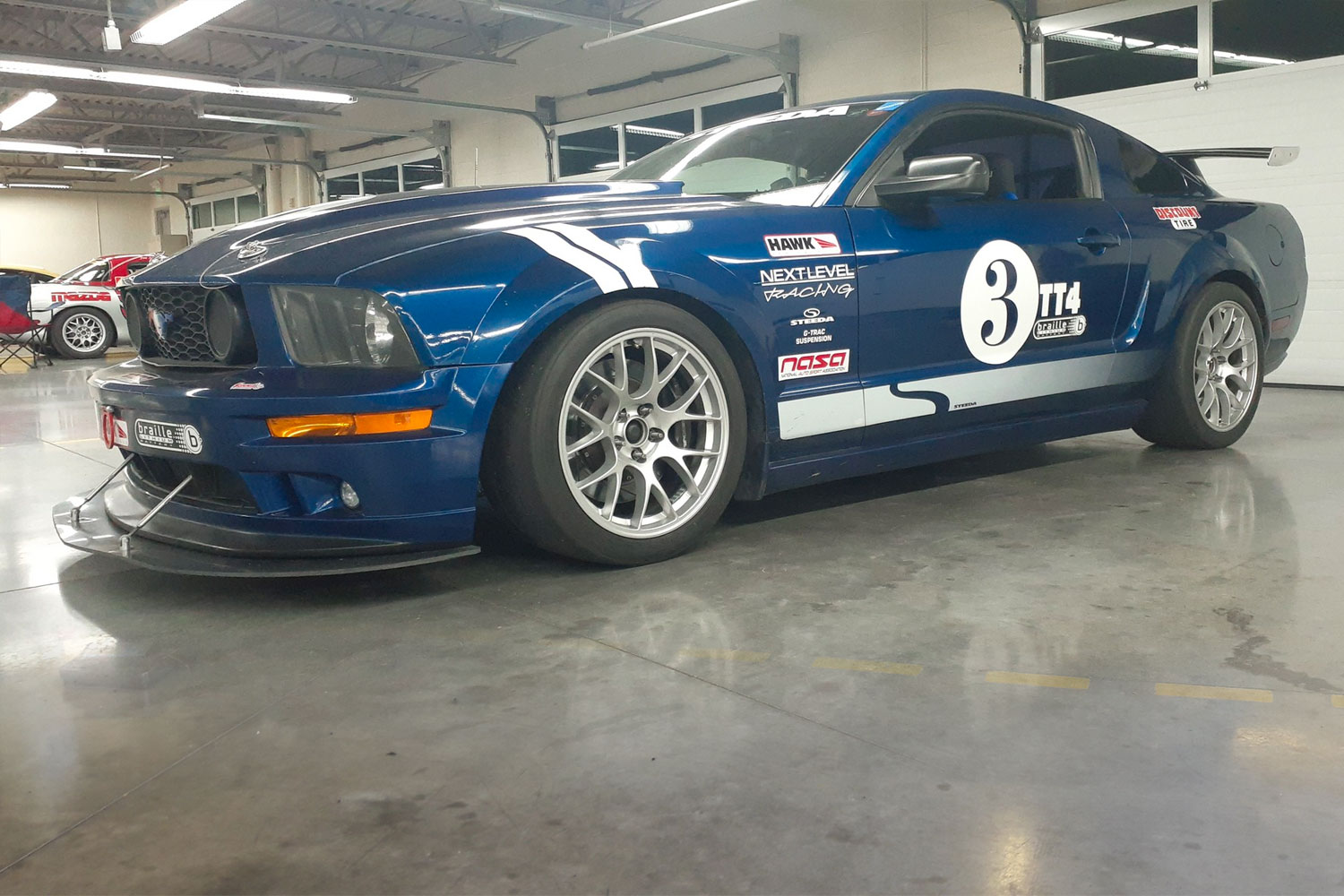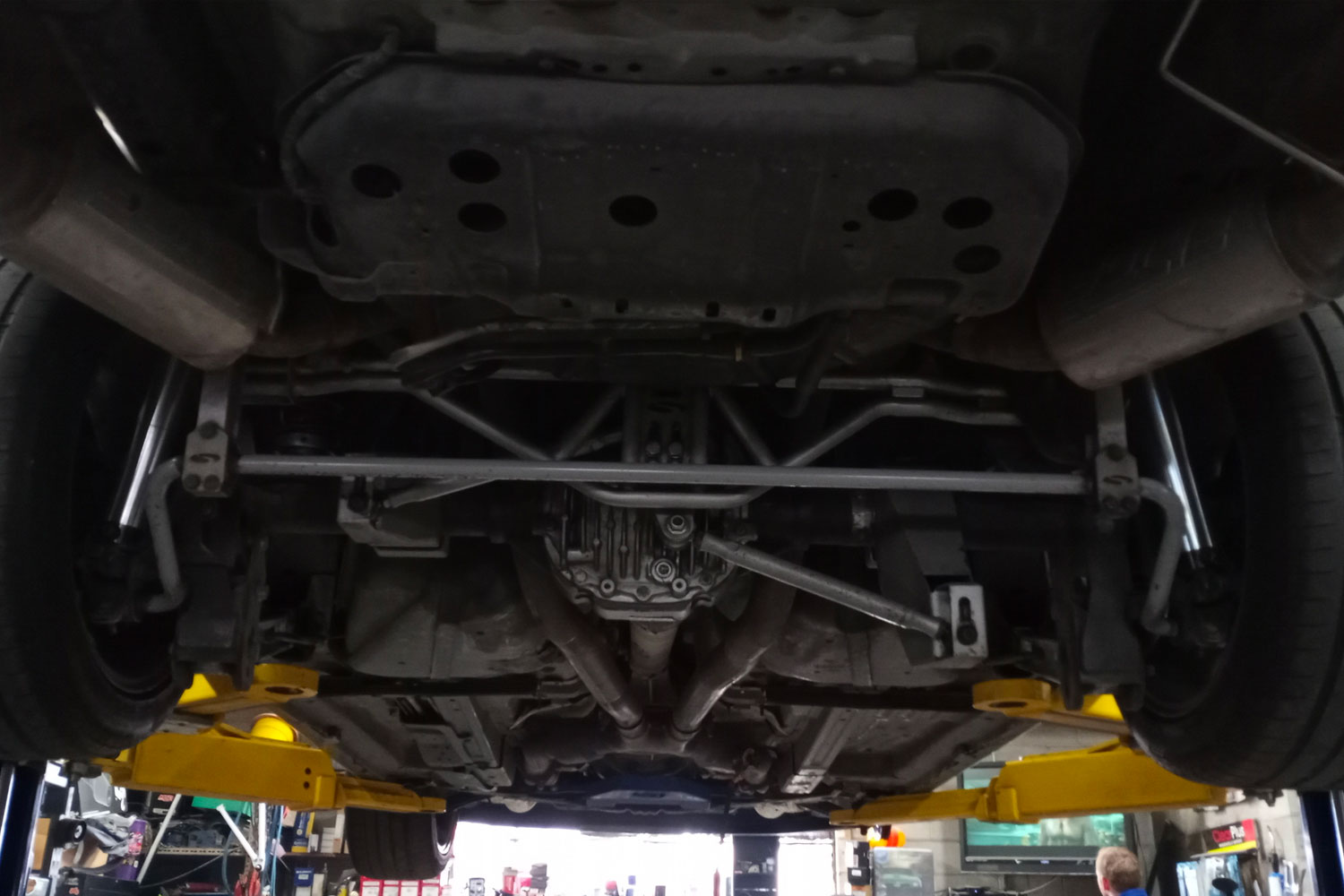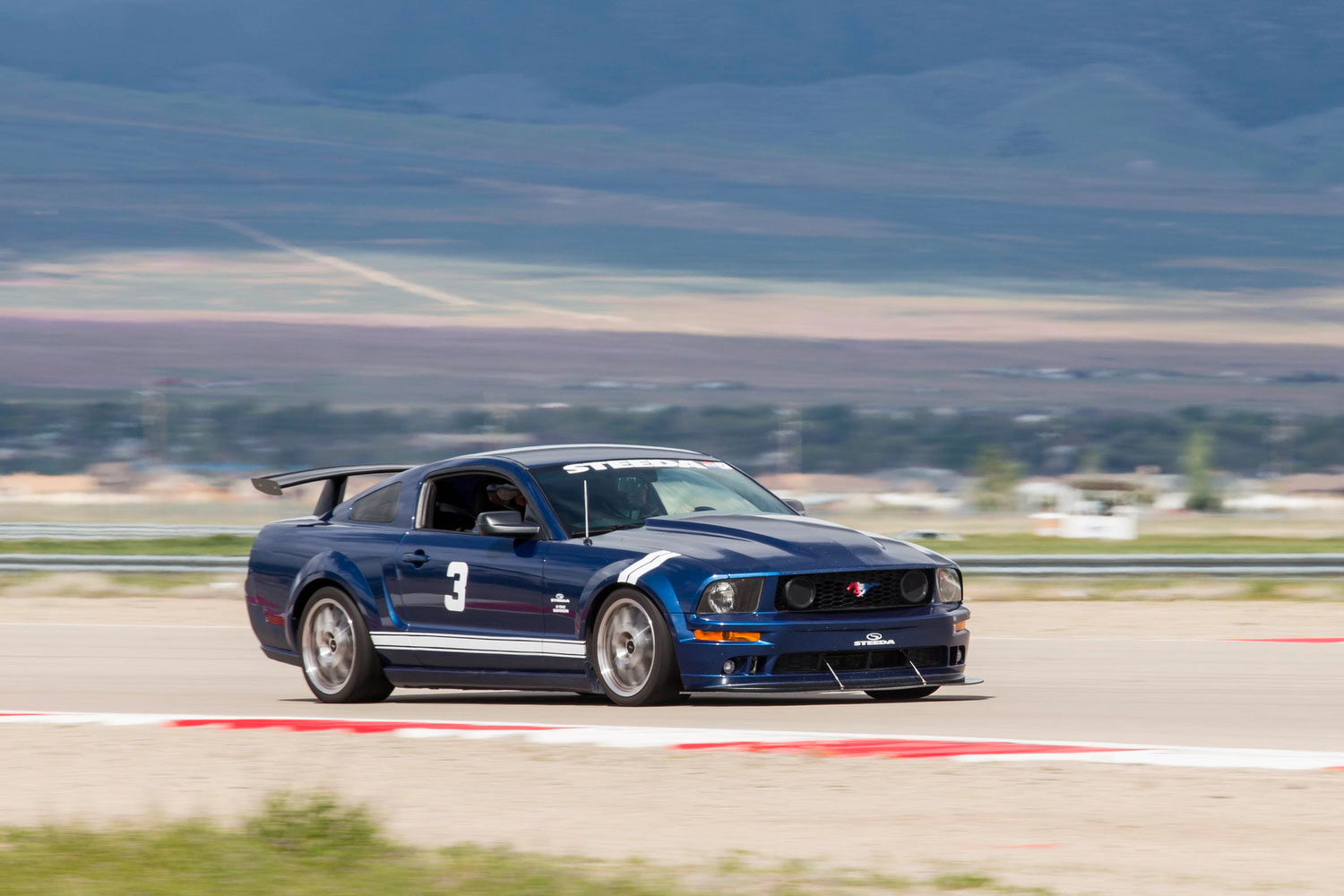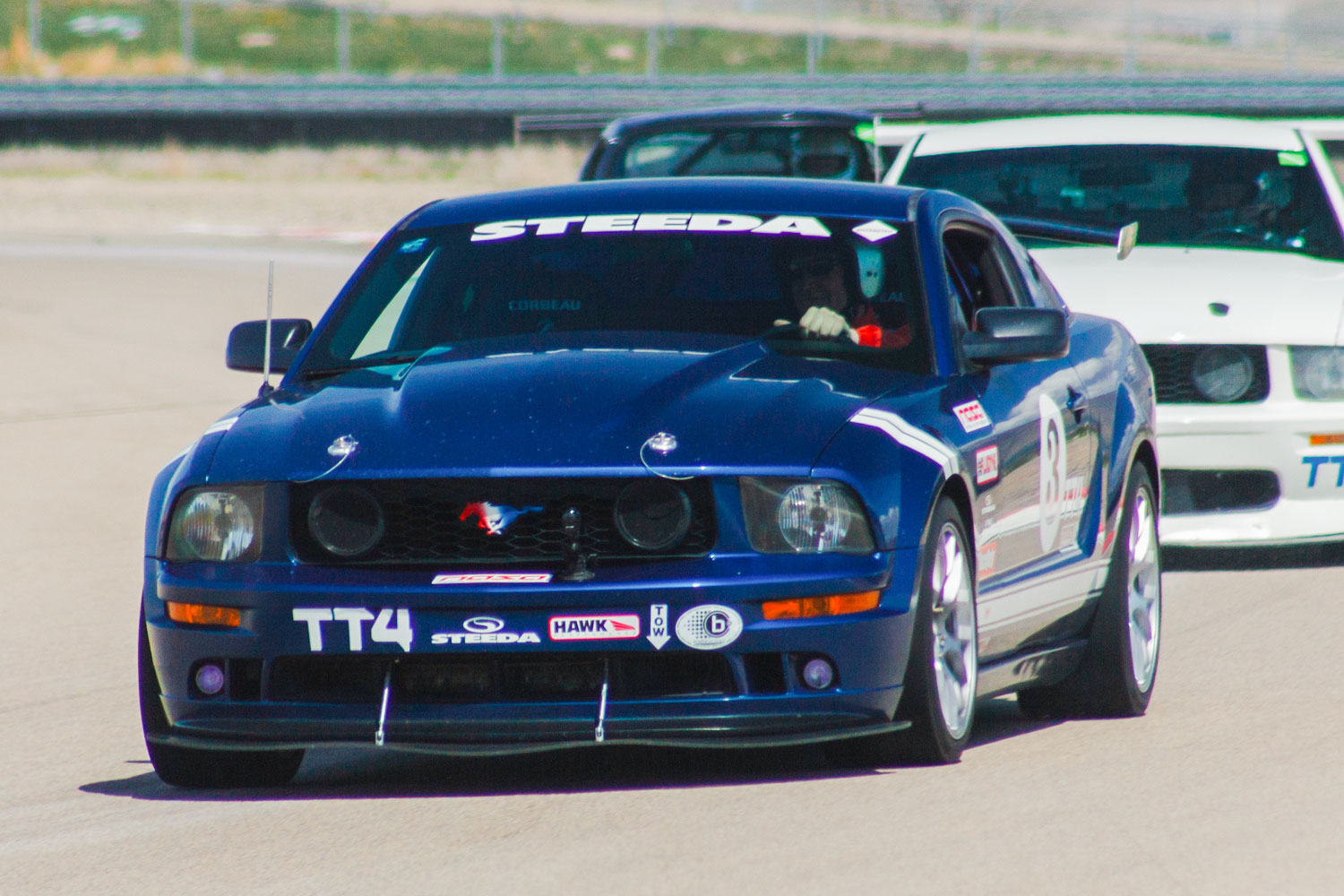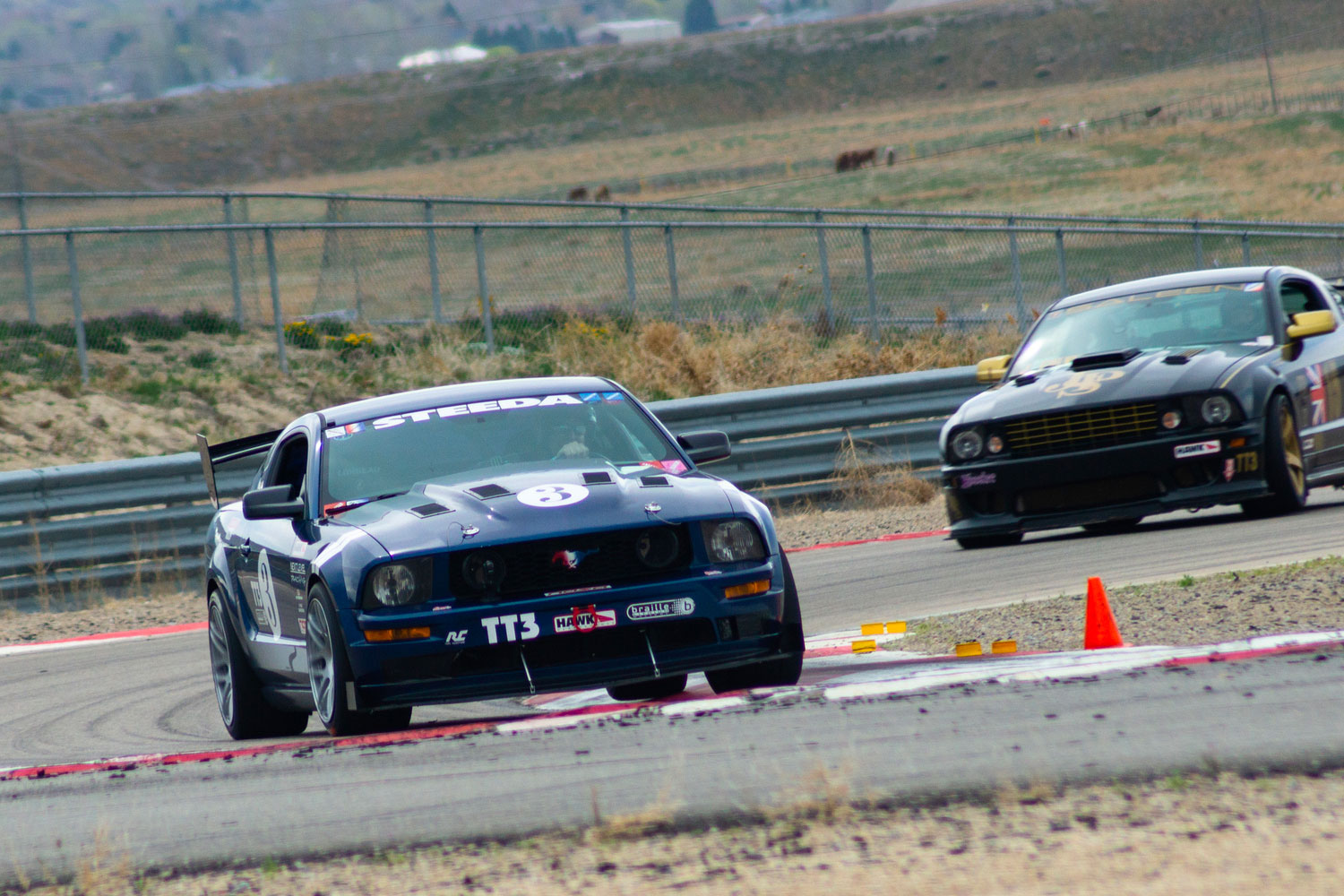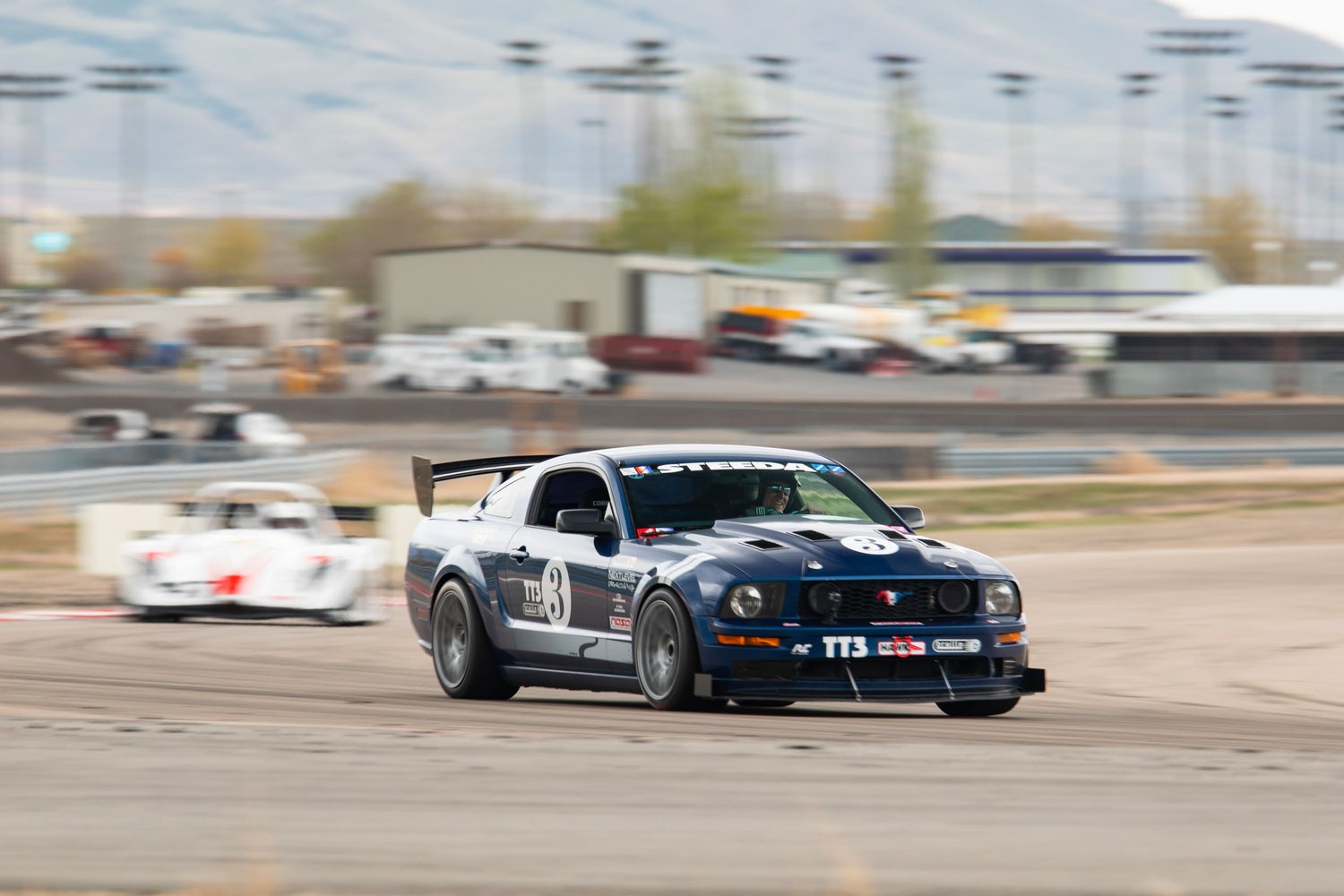
Greg Gates' 2006 Mustang GT Race Car
Meet Greg Gates, longtime friend of Steeda and well-driven racer of this awesome 2006 Mustang GT RaceCar. Gates has been parts of the Steeda family for years with this car and plays a major role in theUtah region NASA racing circuit. With a combination of Steeda parts, Greg has turned his car from roadc ar to a serious race car that regularly wins against much newer cars.
Greg has been racing competitively for years and is close with Graphic Designer, Eric Westover, through the Northern Utah Mustang Owners Association. After some time, Greg moved from simple HPDE racing to TimeTrial and has been running with Xtreme Xperience and other programs ever since, all thanks to his heavily-modified MustangGT.
About Greg Gates Q&A
How did you get into cars and racing?
As a kid we had slot cars. I remember one Christmas when I was about 6 years old,my Dad and I teamed up against my two older brothers - we each tried to keep our team's cars on the track the longest before either or both of us crashed. We watched the Indy 500 as a family and I still remember watching the movie Le Mans as a pre-teen. We had some cool cars on the block I grew up on including a Model T and a Model A, a 1963 Split Window Corvette, a 1971 Pantera and a 1982 Delorean! Lenny across the street from me and four years my senior always let my brother Jeff and I help work on his motorbikes and VW engines for their Dune Buggy. Lenny wound up racing for Team Yamaha in the deserts of Southern California in the mid 1970's. So the bug had been planted many times in my pre-teen and early teenage years.
What cars have you owned and/or raced?
After spending a couple of years in Japan and returning home to complete college, I bought my first Mustang, a white 1968 Coupe with a 289-2V 3-speed with the Chrome Package which my buddies and I quickly modified to a 4-bbl Holley, Stinger electronic ignition, etc. After the engine blew (I lost the valve settings sheet so the shop that did my heads set the height incorrectly) I found a place in Hot-Rod famous Whittier, California that would let me work along-side the engine rebuild4-speed Top Loader and 3.55 posi installation. Taylor Engineering for blueprinting and balance. Then I got busy with life - purchased more of your "normal" cars like Nissan Maxima SE V6, Eagle Vision(black), then busy as a Scout Master - a Ford 5.4L Expedition. Then I picked up a 2006 Mustang GT fromFlorida with a few Steeda parts on it - that's how I learned about Steeda.
Have you attended any racing schools?
Beginning in the NASA HPDE program, we were given instructors and as our skills increased, we progressed from HPDE 1, to HPDE 2 and began driving on our own.
What is one of your favorite memories with the car?
I had my car dyno'd at JDP Motorsports - a Chevy race shop. They looked at my flat torque curve and said this motor can't be a Ford!
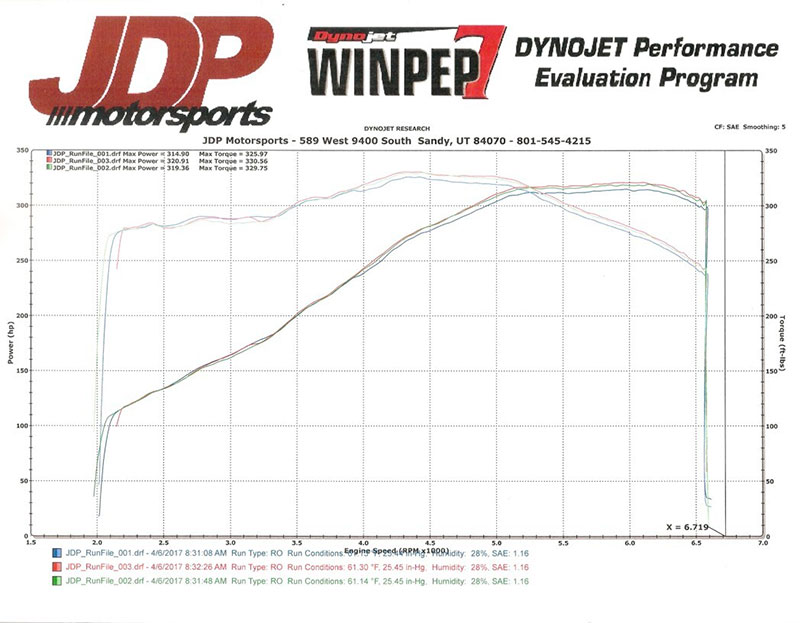
Suggestions for those who may want to get into racing but they’re not sure where to get started.
If you are interested in racing, look up NASA (nasaproracing.com) and find a region close to you. Look at their schedule and go out and observe for the day, talk to program directors,instructors and drivers. We offer free ride-alongs. It's a great way to see what a day is like at the race track. You can ask tons of questions. Most NASA events are free for spectators. If you want to drive, you can sign up online. Always start in HPDE 1 and tell them your experience. If you already have seat-time, they'll move you to the appropriate run-group. If you are already a race car driver but new to NASA, contact the local race director and they'll get you sorted out. If you have a NASA passport,you can visit any NASA event nationwide and drive in the appropriate group based on your passport, TimeTrial license or Race License - just introduce yourself to the race director when you arrive.
Any other information you'd like to share?
If you have a car that you just have to modify and want to race on a road course -power adders should be the last thing you do. In road racing it's all about suspension, grip and brakes.I've chased down many cars that have twice my power. Learn to drive fast, then add power. I'm still learning to drive fast, so I still haven't added power. But at 244,000 miles, I think my engine will eventually die and then I'll look at a Coyote swap...
The Build
Greg's Mustang started its life with him having already recieved a few different Steeda upgrades down inFlorida before he got his hands on it. Over the next few years, Gates improved his driving skill and the handling capabilities of the car, taking it further than it was ever intended to go. With the goal of being competitive on the course, this build required a lot of weight work and handlign improvements, but the car now is more competitive than ever.
-
From the Factory:
- 2006 Mustang GT
- 4.6L V8
- 5-Speed Manual Transmission
-
Suspension Modifications
- Steeda BallJoints
- Steeda Bumpsteer Kit
- Steeda Adjustable Competition Front Sway Bar
- SteedaHeavy Duty Strut Mounts
- Steeda Strut Tower Brace
- SteedaUltimate Sway Bar Kit
- SteedaBillet Aluminum Lower Control Arms
- Steeda Adjustable Rear Upper Control Arms
- SteedaStage 3 Coil Over Kit
- Steeda Watts Link
- Ford Performance Bushing Kit
-
Brake System Modifications
- Steeda 14" Big Brake Kit (Front)
- Steeda 13" Big Brake Kit (Rear)
-
Powertrain Modifications
- Steeda Under Drive Pulleys
- D&D Performance Tremec T-56 Magnum XL 6-Speed Kit
- ACE Power Force Twin Disc Clutch
- Ford Performance 3.73 Gears
- Steeda Tune
- Torsen T-2R
- Steeda Cold Air Intake
- Bob's Auto Sport Axle Reservoir
- Cold Case High-Flow 2-Core Radiator
- Steeda Tri-Ax Shifter
-
Exterior Modifications
- Steeda Cowl Hood
- Steeda Functional Race Facia
- Steeda Functional Race Wing
-
Interior Modifications
- Corbeau FX1 Race Seats
- RaceQuip 6-Point Harnesses
- Race Technology DL1 Club Data Acquisition System
- Rach Crono Pro App


